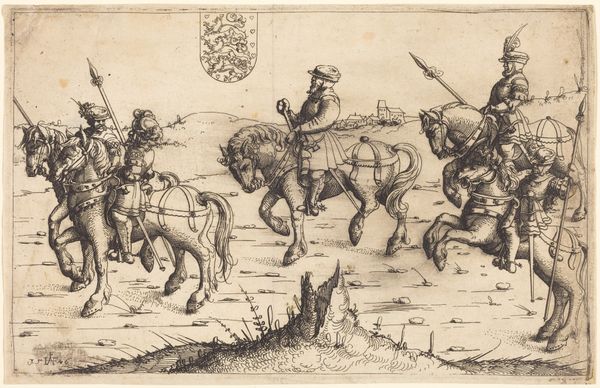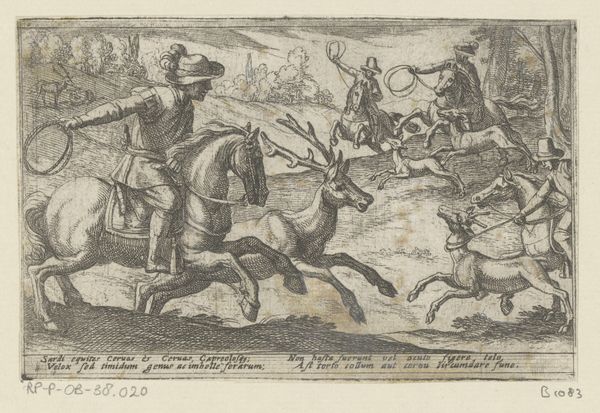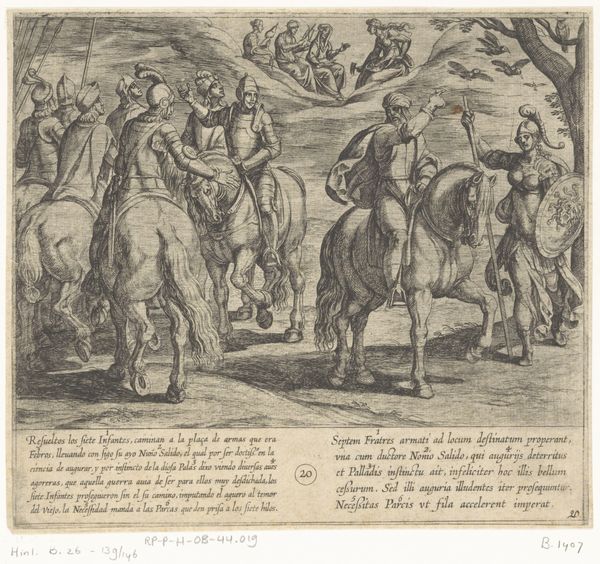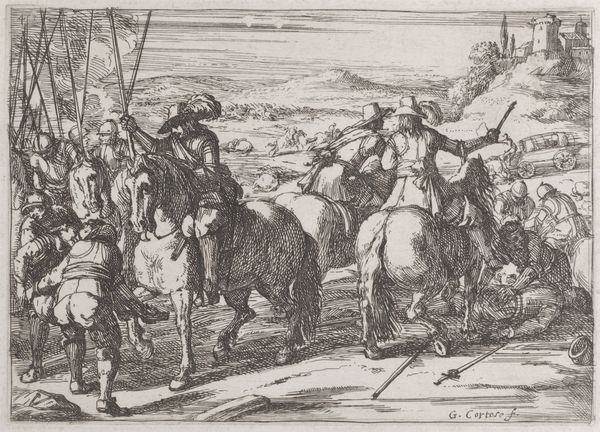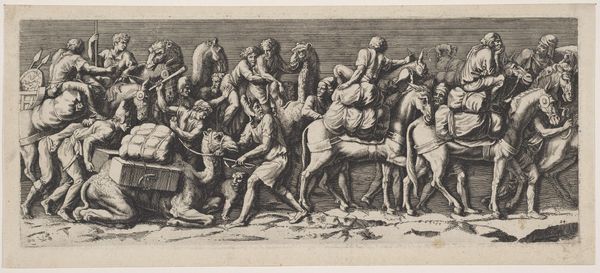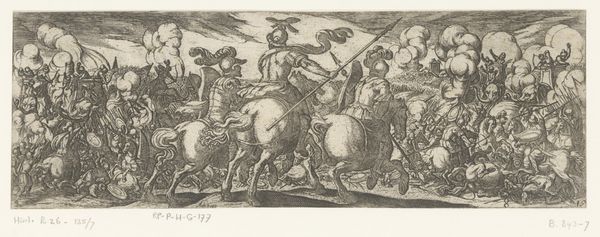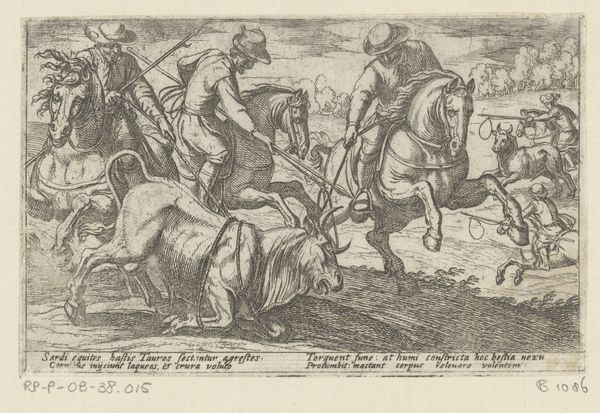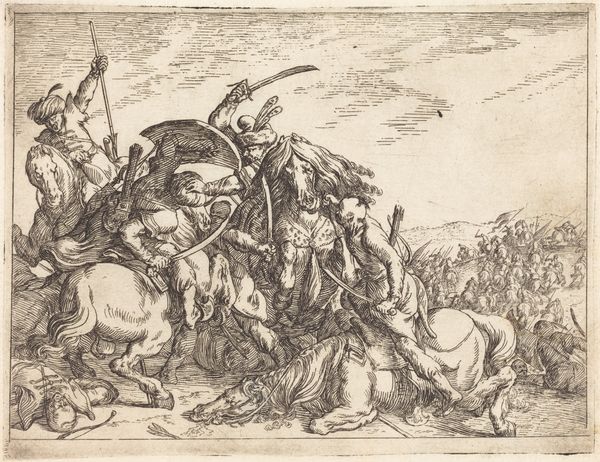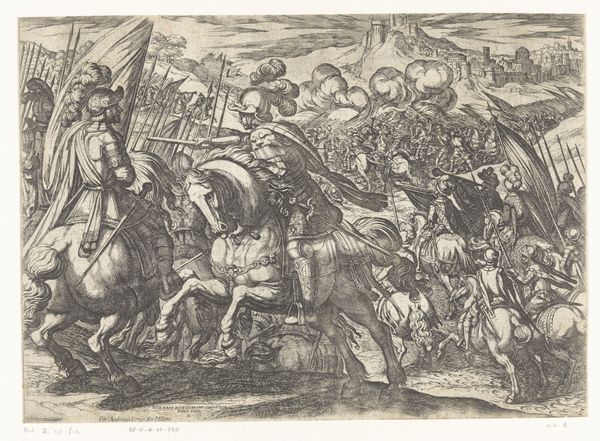
drawing, print, engraving
#
drawing
#
ink drawing
# print
#
war
#
figuration
#
11_renaissance
#
history-painting
#
italian-renaissance
#
engraving
Dimensions: height 260 mm, width 453 mm
Copyright: Rijks Museum: Open Domain
Curator: Looking at this intricate print by Antonio Fantuzzi, dating back to the mid-16th century, titled "Scène uit de Dacische Oorlogen" – which translates to "Scene from the Dacian Wars" – I'm immediately struck by how meticulously rendered the chaos of battle is. What catches your eye? Editor: The somber mood. Despite the scene's dynamism, a pervading sense of violence and fatality engulfs the viewer. Look at the fallen figure in the foreground; it serves as a stark reminder of war's devastation and echoes historical trauma related to Roman expansion. Curator: Right. You see the bodies strewn across the foreground. It feels incredibly active. He’s using engraving, which is inherently about creating these sharp lines to define forms, to describe such a turbulent scene. And the medium feels a bit at odds with the topic to me. War—it shouldn’t feel clean. Editor: I agree. The printmaking medium also raises questions of accessibility and power. Consider how printmaking disseminated images of war, shaping public opinion and contributing to propaganda narratives around conquest. To your point: war shouldn’t feel clean because the printing press, itself, offered an obscuring of violent historical reality. Curator: I hadn't thought of that. So this wasn't about reporting; it's about shaping the narrative. This piece is more than just a depiction of conflict; it's an assertion of power and a way to immortalize it through reproducible imagery. It almost normalizes it, doesn't it? Editor: Absolutely. It prompts critical engagement with how historical events are constructed and disseminated, asking us to challenge the biases embedded within such portrayals. These are always renderings. Re-memberings. Curator: Considering its Renaissance context and its focus on classical history, do you think Fantuzzi had particular ideological goals? Editor: It’s fascinating to speculate. Perhaps it's a romanticization of warfare tied to larger social power structures, or even just Fantuzzi attempting to emulate masters such as Michelangelo or Leonardo by flexing similar artistic prowess with anatomy and shading. Curator: Or all of the above, and perhaps none of them! Whatever Fantuzzi's goals, the engraving clearly captures this timeless dance between order and utter disarray, beauty and tragedy. Editor: True. Thinking about the themes of historical representation and violence, what will stay with me the longest are all the ways art functions to not just describe, but manipulate history.
Comments
No comments
Be the first to comment and join the conversation on the ultimate creative platform.

